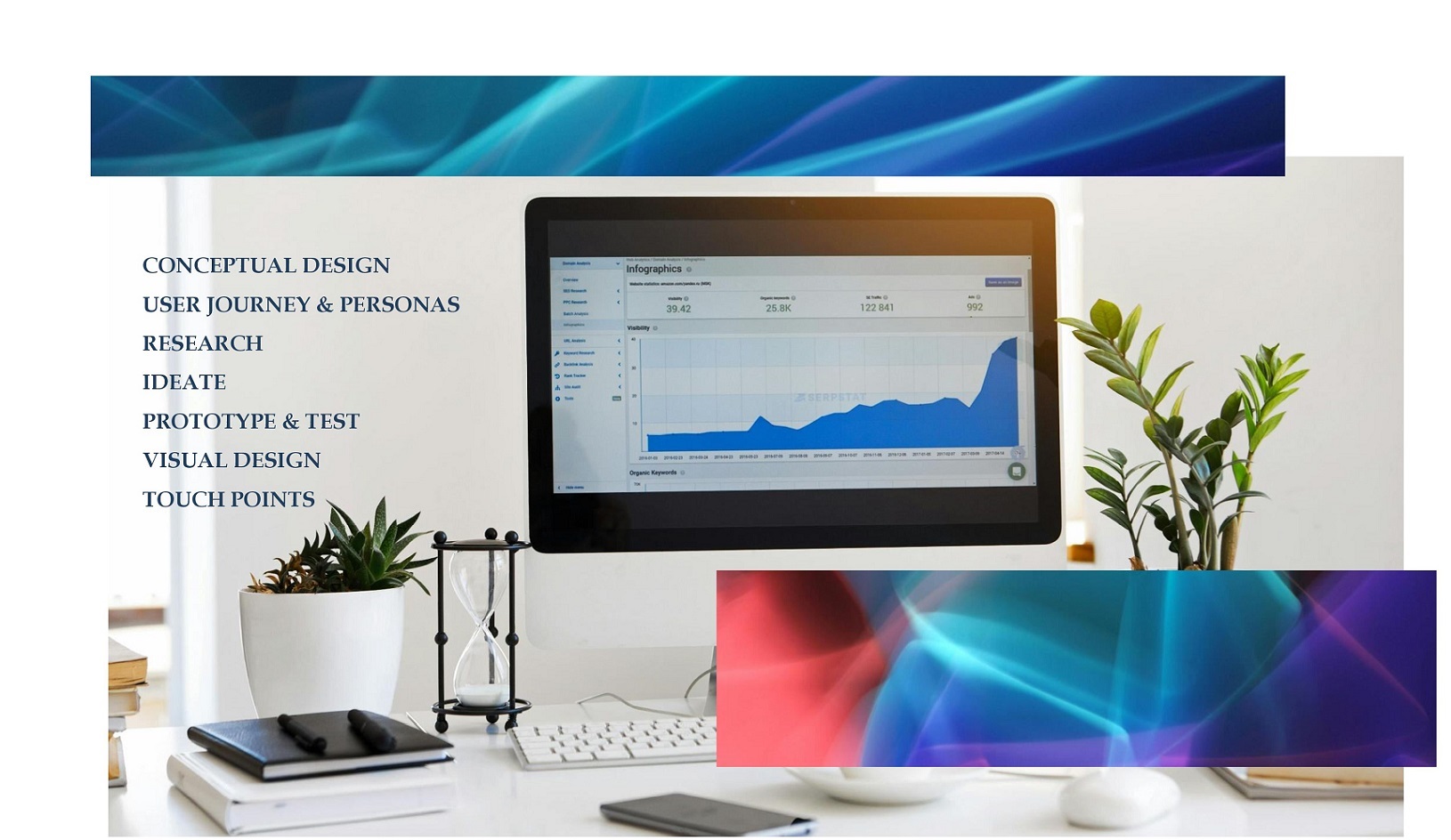
Our UX/UI design services perform a variety of functions aimed at creating effective, user-friendly, and visually appealing digital products. These functions can be broadly categorized into several key areas:
Client Consultation and Needs Assessment
- Requirement Gathering: Understanding the client’s business goals, target audience, and specific needs.
- Stakeholder Interviews: Conducting interviews with key stakeholders to gather insights and expectations.
- Project Scoping: Defining the scope of the project, including timelines, deliverables, and budgets.
User Research and Analysis
- User Personas: Creating detailed profiles of target users to guide design decisions.
- User Journeys: Mapping out the steps users take to achieve their goals within the product.
- Competitive Analysis: Analyzing competitors to identify best practices and opportunities for differentiation.
Information Architecture (IA)
- Sitemaps: Developing a hierarchical structure of the website or app to ensure logical navigation.
- Wireframes: Creating low-fidelity sketches of the layout to outline the structure and placement of elements.
Interaction Design
- Prototyping: Building interactive prototypes to simulate the user experience and test functionality.
- Usability Testing: Conducting tests with real users to gather feedback and identify areas for improvement.
- Micro interactions: Designing small, interactive elements that enhance user engagement (e.g., button animations, loading indicators).
Visual Design
- Branding Integration: Ensuring the design aligns with the brand’s identity, including colors, typography, and imagery.
- High-Fidelity Mockups: Creating detailed, pixel-perfect designs that represent the final look of the product.
- Design Systems: Developing a consistent set of design guidelines and components for use across the product.
Responsive and Adaptive Design
- Mobile-First Design: Ensuring the product is optimized for mobile devices, often the primary user interface.
- Cross-Platform Consistency: Making sure the design works seamlessly across different devices and screen sizes.
Accessibility
- WCAG Compliance: Ensuring the design meets Web Content Accessibility Guidelines to be usable by people with disabilities.
- Inclusive Design: Creating products that are accessible and usable by as many people as possible, regardless of their abilities or circumstances.
Collaboration and Handoff
- Developer Handoff: Providing detailed design specifications, assets, and guidelines to developers for implementation.
- Design Collaboration Tools: Using tools like Figma, Sketch, or Adobe XD to facilitate collaboration between designers, developers, and stakeholders.
Continuous Improvement
- Analytics and Feedback: Using user data and feedback to make ongoing improvements to the design.
- A/B Testing: Testing different design variations to determine which performs better in terms of user engagement and conversion rates.
Specialized Services
- E-commerce Design: Optimizing the user experience for online shopping, including product pages, checkout processes, and payment systems.
- SaaS Design: Designing complex software interfaces with a focus on usability and scalability.
Consulting and Strategy
- UX Audits: Evaluating existing products to identify usability issues and recommend improvements.
- Design Strategy: Developing a long-term plan for the product’s design evolution, aligned with business goals.
Project Management
- Timeline Management: Ensuring that the project stays on track and meets deadlines.
- Resource Allocation: Managing the allocation of designers, researchers, and other resources.
- Client Communication: Keeping the client informed and involved throughout the design process.
Quality Assurance
- Design Reviews: Conducting thorough reviews to ensure the design meets quality standards and client expectations.
- User Testing: Continuously testing the design with real users to validate its effectiveness and usability.
Training and Support
- Client Training: Providing training sessions for the client’s team on how to use and maintain the design.
- Ongoing Support: Offering post-launch support to address any issues and make necessary adjustments.
Benefits of UX/UI Design Services
- Enhanced User Satisfaction: A well-designed interface improves user satisfaction and loyalty.
- Increased Conversion Rates: Intuitive and appealing designs can lead to higher conversion rates and better business outcomes.
- Reduced Development Costs: Identifying and addressing design issues early can save time and money during development.
- Competitive Advantage: A superior user experience can differentiate a product in a crowded market.By performing these functions, a UX/UI design helps businesses create digital products that not only look great but also provide a seamless and enjoyable user experience.
